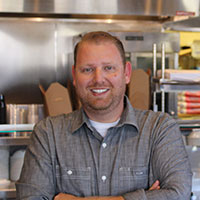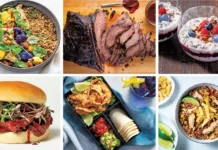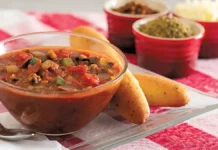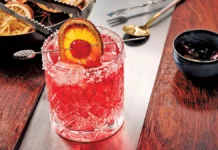
Just like you do with your employees, it’s time to do an end of year performance review for your restaurant. It’s a great way to know the amount of growth you’ve had or what’s caused you to remain stagnant. Make sure you are honest so you can put together a great plan for next year.
Now let’s see how your numbers stack up using an easy method to track your restaurant’s performance using actionable data.
THE NEED FOR ACTIONABLE DATA
Many restaurant owners feel the need to have spreadsheet after spreadsheet after spreadsheet of data (or their accountant gives them giant reports). When I ask them what they do with all of this information, they shrug their shoulders and say I don’t know.
I would rather have less data that is actionable and accurate, than more data that we don’t understand. More is sometimes just more…
6 KEY END OF YEAR FINANCIAL METRICS TO TRACK IN YOUR RESTAURANT
1. Cost of Goods Sold (CoGS)
The cost of the raw ingredients (food, beer, wine, liquor) that you sell for a specific period of time.
A simple formula: Year-End Purchases ÷ Year-End Sales
For example: Your restaurant purchased $300,000 in food in 2021 and had $1,000,000 in food sales.
300,000 / 1,000,000 = .30x 100 = 30%
2. Labor Cost
This is the formula used to calculate labor cost percentage over a period of time.
A simple formula: Total Spent on Labor (including taxes, benefits, insurance, etc.) ÷ Total Sales.
For example: Your restaurant spent $300,000 in labor in 2021 and had $1,000,000 in sales.
300,000 / 1,000,000 = .30x 100 = 30%
3. Prime Cost
Food cost varies too much with too many factors from restaurant to restaurant to create a “benchmark” of what is good or bad. Same with labor cost. However, by adding both numbers together, you arrive a value that is easy to benchmark. Your restaurant needs to be under a 60% prime cost.
A simple formula: Prime Cost = Total CoGS + Total Labor ÷ Total Sales
4. Controllable Expenses (Direct Operating Expenses or DOE)
These are the expenses such as chemical purchases, paper goods, repairs and maintenance, janitorial services, etc. These are not items that fall under CoGS but they are definitely affected by how busy you are and they should be tracked and controlled.
5. Restaurant Controllable Cost (RCC)
Restaurant Controllable Cost is THE most valuable and MOST important number in your restaurant. It is Prime Cost with the addition of Direct Operating Expenses. When add CoGS with Labor and DOE you have ALL the controllable numbers in your restaurant in one calculation. Control the Controllable!
A simple formula: Total Purchases + Total Labor + Total DOE ÷ Total Sales
6. Per Person Average
If you find that sales were up but your guest count was down or flat, that’s not growth! That’s simply a price increase. If you know how many guests you served last year and you know your total sales, then you can calculate per person average. You want to see year over year increases in both per person average and total guest count.
A simple formula: Total Sales ÷ Total # Guests Served
If somebody tells you what your CoGS, food cost, or labor cost should be, fire them immediately. I don’t know what that should be and neither should anybody else. What I do know is that your Prime Cost should always be less than 60%. Then when you add in DOE, you should be around 65%-68% (this is your RCC). This leaves you with about 30-35% for fixed expenses and some room for profit.
4 BONUS METRICS
1. Employee Turnover Rate
This number tells you how often you are having to hire new employees due to employee churn. This number if very telling.
A simple formula: # of employees you have ÷ # of employees hired
2. Average Length of Employment
This should go up every year that you are open. Recognizing that this year has been particularly tough, it’s still a very important to track year over year.
3. Average Rating on Major Review Sites (Google, facebook, Yelp, DoorDash, UberEats)
4. Number of Reviews on Major Review Sites
Numbers don’t lie, people. By taking an honest look at your year-end numbers, you will see where your restaurant excelled or where you need to put in additional work in the new year. At minimum, you should be reviewing these numbers yearly, but if you can track quarterly (or even monthly) you will have actionable data and start correcting areas that need it immediately. If numbers aren’t your thing, there are software packages that can help you.
 Ryan Gromfin is an author, speaker, chef, restaurateur, and founder of therestaurantboss.com, clickbacon.com, and scalemyrestaurant.com. He is the most followed restaurant coach in the world helping Restaurant Owners and Operators increase profits, improve operations, and scale and grow their businesses.
Ryan Gromfin is an author, speaker, chef, restaurateur, and founder of therestaurantboss.com, clickbacon.com, and scalemyrestaurant.com. He is the most followed restaurant coach in the world helping Restaurant Owners and Operators increase profits, improve operations, and scale and grow their businesses.























